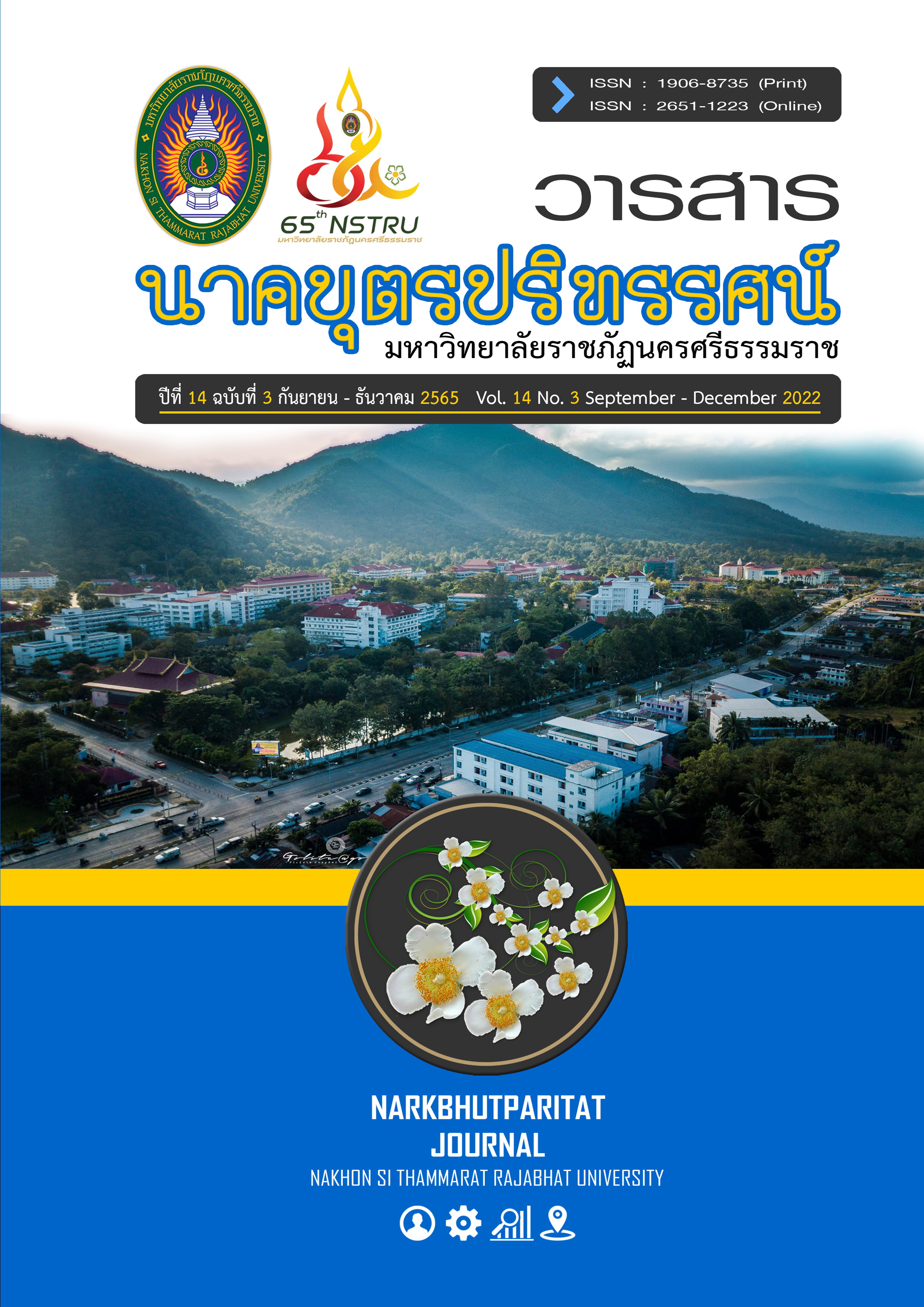The Strengthening of Community and Cultural Conservation of Indigenous Rice Varieties: a Case Study of Surat Thani Province
Main Article Content
Abstract
The study on a strengthening of community and cultural conservation of indigenous rice varieties: a case study of Surat Thani Province applies a qualitative research model. The purposes of this research were 1) to study the strengthening of communities in the conservation of Indigenous rice varieties in Surat Thani province; 2) to study the culture of indigenous rice conservation. The research team relied on purposive sampling and this case study used in-depth interview as a tool for data collection from village philosophers, the group that utilized the wisdom in preserving native rice varieties in Surat Thani Province and related government officials, totaling 60 people. Data were analyzed using descriptive analysis in ascending order. The results of the research are found that 1) there is strengthening in the conservation of indigenous rice varieties by promoting the grouping of members. All parties jointly manage the problem of Indigenous rice planting. They also collaborate in dredging the river in order to be able to store water for agriculture throughout the year and expand the network of collaborations from groups within the community; and 2) culture is taken place in preserving Indigenous rice varieties by inheriting the culture of traditional cultivation. In addition, there is the use of labor instead of machine. Indigenous rice varieties are also consumed as both savory and sweet food and processed into flour for baking. There are rituals and beliefs such as the request for rain and the request for forgiveness from Phra Mae Pho-Sop as well.
Article Details

This work is licensed under a Creative Commons Attribution-NonCommercial-NoDerivatives 4.0 International License.
References
Apichatkriengkrai W., Guptabutra T. & Supanimit P. The Art Project of Ecological Aesthetic in Thai Rice Culture. Veridian E-Journal, 10(1), 2054-2076. (in thai)
Chantarasupasen J., Khoomsab K., Khoomsab R., Tantong S., Khunratchasena K., Noikondee R., Srichantawong C. & Buranachokpaisan K. (2020). Using AIC Technique for Monitoring and Participation of Community to Conservation of Freshwater Jellyfish at Nong Mae Na Subdistrict Khao Kho District, Phetchabun Province. Rajapark Journal, 14(37), 204-214. (in thai)
Jituea N. & Sungrugsa N. (2017). Definition Source of Meaning Activity format and guidelines for the creation of Public Mind of Students of Faculty of Business Administration Rajamangala University of Technology Thanyaburi. Veridian E-Journal, 10(3), 2387-2404. (in thai)
Isariyanon M., Isariyanon S. & Silakorn S. (2021). Community development of community strength to self-organization community of Thung Pho sub-district, Na Di district, Prachin buri province. Nakhon Lampang Buddhist’s Journal, 10(2), 15–30. (in thai)
National Economic and Social Development Council. (2017). The Twelfth National Economic and Social Development Plan. Retrieved 2021, October 26, from https://www.nesdc. go.th/ewt_dl_link.php?nid=6422 (in thai)
Nonsiri P. & Narongrit C. (2018). The Key Success Factors of Collaborative Network for Enhancing Green Tourismin Khao Kho District, Phetchaboon Province. Journal of Southern Technology, 11(2), 15-26 (in thai)
Office of Agricultural Economics. (2019). Retrieved 2021, October 26, from http://www.thairice exporters.or.th/production.htm
Suratthani Rice Seed Center. (2018). Retrieved 2021, October 26, from https://stn-rsc.rice thailand.go.th/ (in thai)
Sutthinon, S. (2018). Rice Culture: The Production and Consumption Process According to Buddhism. Mahachula Academic Journal, 5(2), 116-124. (in thai)
Thanawut S. & Chareon S. (2018). This research encourages and establishment a learning center for rice tranformong (khao lam) to convserve wisdom: Banphai, moo5 tambol Khrabuangyai Phimai district, Nakhon Ratchasima. Journal of Graduate School of Commerce Burapha Review. 13(2), 135-145. (in thai)
Udomtheerakhun P. & Jaruma B. (2020). Language and Culture: Its Meaning, Importance, and Relation. Mahachula Academic Journal, 7(2), 53 - 63. (in thai)


